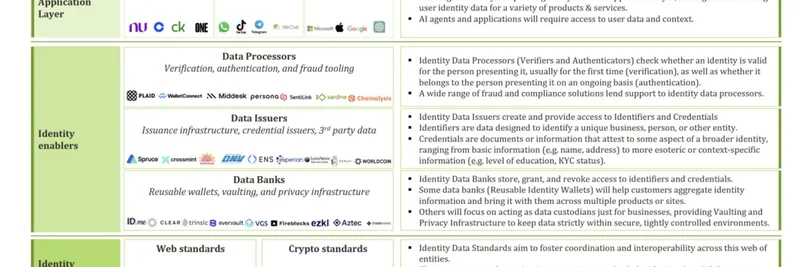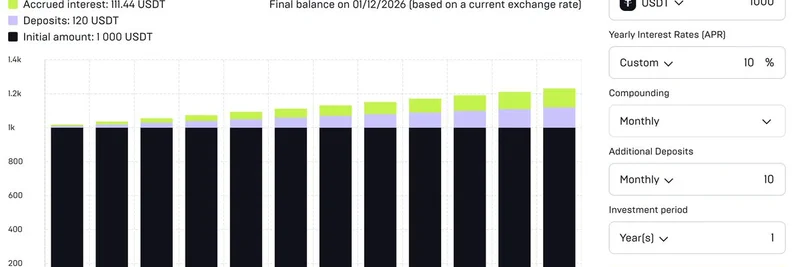If you're deep into the world of crypto and meme tokens, you've probably come across the buzz around $TIBBIR. This stealth-launched project on the Base chain is making waves with its focus on blending AI, security, and efficiency in the blockchain space. Recently, a tweet from @Altcoinist_com caught our eye, linking Ribbit Capital's 2024 Identity Framework directly to $TIBBIR. They even call it the "unofficial $TIBBIR white paper." Let's break this down in simple terms and see why it's a big deal for blockchain enthusiasts and meme token traders alike.
What the Tweet is Saying
The tweet highlights Ribbit Capital's Identity Framework from January 2024, based on insights from @ribbita2012 and @mickymalka. It positions this framework as the backbone for $TIBBIR's KYA (which we believe stands for "Know Your Agent") infrastructure, built quietly in stealth mode. The post quotes key lines from the framework, like how the biggest identity companies operate at the application layer, handling user data for various products and services. It also stresses that AI agents—think smart bots that act on your behalf—will need seamless access to user data and context to function properly.
Interestingly, the tweet points out that "Data Issuers = Token Factories," drawing a parallel between issuing identity credentials and creating tokens. There's a nod to Ribbit Capital leading an investment round in Crossmint in 2025, even though Crossmint was mentioned in their 2024 paper. The quoted part from an earlier tweet emphasizes that crypto, fintech, and the internet aren't ready for AI agents yet because user data and workflows aren't machine-readable. All eyes, it says, are on Ribbit Capital, Crossmint, and $TIBBIR's KYA and Token Factories.
Breaking Down Ribbit Capital's Identity Framework
Ribbit Capital, a top-tier VC firm specializing in fintech and crypto, released this framework as part of their research on digital identity. Think of digital identity as all the data that proves who you are online— from basic info like your name and birthdate to more complex stuff like financial history or preferences. The framework outlines a layered system to make identity more reusable, secure, and interoperable, especially in a world where AI is taking over tasks.
Here's a quick rundown of the key layers, based on the diagram:
Application Layer: This is where big players like financial apps (e.g., Nu, Chime), social apps (e.g., WhatsApp, TikTok), and platforms (e.g., WeChat, Google) sit. They store and use user identity data for products and services. The framework notes that AI agents will need access to this data to operate effectively.
Identity Enablers: This middle layer handles the heavy lifting:
- Data Processors: Companies like Plaid, WalletConnect, or Persona that verify, authenticate, and detect fraud. They check if an identity is valid, often for the first time (verification) or ongoing (authentication).
- Data Issuers: Infrastructure for issuing credentials, like Spruce, Crossmint, or Worldcoin. These create unique identifiers for people or entities, turning info into verifiable documents (e.g., level of education, address).
- Data Banks: Reusable wallets and privacy tools from outfits like ID.me, Clear, or Aztec. These store, grant, and revoke access to identity data, helping users aggregate info across sites while keeping it secure.
Identity Data Standards: At the base, web standards (W3C, OpenID) and crypto standards (XMTP, Ceramic) ensure everything works together. These are managed by non-profits, companies, and governments to foster interoperability.
The idea is to turn identity into "the new money," where banks and fintechs can issue reusable digital IDs, cutting costs on things like KYC (Know Your Customer) and even turning them into revenue streams.
How This Ties into $TIBBIR and Meme Tokens
$TIBBIR, or Ribbita by Virtuals, is a token with a current price around $0.30 and a market cap hovering near $288 million as per CoinMarketCap. Launched stealthily on the Base network, it's designed to boost efficiency and security in crypto and AI. The tweet suggests that Ribbit's framework is essentially the blueprint for $TIBBIR's KYA system—likely "Know Your Agent," a play on KYC but tailored for AI agents.
In the meme token world, where projects often start as jokes but evolve into serious tech plays (think Dogecoin turning into a payment rail), $TIBBIR stands out by addressing real problems. Token Factories could refer to mechanisms for issuing identity-based tokens, making data machine-readable for AI. This aligns with the framework's push for reusable identities, potentially enabling seamless interactions in DeFi, NFTs, or even meme-driven communities.
For blockchain practitioners, this means better tools for compliance and fraud prevention without sacrificing privacy. Imagine a meme token ecosystem where AI agents handle trades or community governance based on verified user identities— that's the future this framework hints at.
Why It Matters for the Future
As AI integrates deeper into blockchain, frameworks like this could bridge the gap between traditional finance and crypto. Ribbit Capital's investments, like in Crossmint (a platform for NFT minting and wallets), show they're betting big on identity tech. For $TIBBIR holders or watchers, this "unofficial white paper" provides context on why the project might have legs beyond the meme hype.
If you're trading meme tokens or building on blockchain, keep an eye on developments in digital identity. It could be the key to unlocking the next wave of innovation. What do you think— is $TIBBIR the next big thing in AI-powered crypto? Drop your thoughts in the comments!


